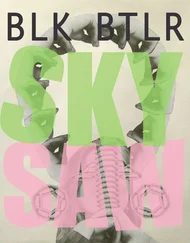By the 1960s, experimentation with hypnotic suggestion rises to popularity with regular reports of strong results, particularly as an alternative where sleep medicine had failed— in repetition image, in coagulation of the mind’s wanting to be confined . As well, muscle relaxation training, systematic desensitization to aggravating stimuli, classical conditioning via metronome and other triggers, biofeedback, electrosleep (induction of low electric current into the resting body), placebo attribution (pills that have simply been suggested to cause calm), and even correcting a sleeper’s expectations (relieving stress by devaluing routine) have all been studied and marked as potentially beneficial methods of therapy, despite their connotations.176 Other studies suggest that results come only from cures intentionally paradoxical — i.e., telling patients that the sleeplessness is a side effect of their trying, and therefore, to nod off, simply try not to — whereas straightforward, analytical methods further the problem or have no effect — i.e., having patients focus on and identify the thoughts that keep them up, thereby subverting the brain by turning it against its own weight, instead of crawling further in.177
]
]
]
Particularly in our current realm of increasing self-diagnosis and online problem solving, the menu of ways to learn to sleep could stuff a head. Online, each question often comes with fifty answers, and further questions often veer out of each of these. Our information has its own information, which begets information. Inside the shells, if not by nature, we must find a way to sleep, to learn to override the signal with our own nowhere. Googling sleep as of today returns 1.42 trillion results. Googling cure insomnia cuts the set down to just under two million. Often the resulting copy for these vendors seems written by someone hypnotized or already deep asleep themselves:
The interesting thing about sleeping pills is the placebo effect. .. Sometimes when I can’t sleep, I put myself into a state of trance, and imagine that I am taking a sleeping pill. I am usually asleep in a few minutes. Even though my conscious mind knows that this was not real, my subconscious mind does not know and this is the important part. THE SUBCONSCIOUS MIND DOES NOT KNOW THE DIFFERENCE BETWEEN A REAL AND AN IMAGINED EVENT.178
Other sites offer webcopy spellspeak, mistyped modern babble relics of the home remedy, likely generated by a head behind a desk to make a couple bucks, or out of boredom. Try actively accommodating this:
Wrap handfuls of uncooked oats and dried camomile flowers, and a pinch of mandrake in a square of cheesecloth and filter a hot bath through it. Light some Egyptian kyphi incense and bathe while deeply breathing the aromas. In bed, envisage yourself in a field of camomile. .. Think of lying down in the fragrant daisies, lulled to sleep by their fresh, sweet smell. Beneath the ground, the underworld; and above, in the blue sky, Witches and rainbow-hued elementals fly by on unimaginable missions. You lie drowsing in the fragrant flowers, following one of the passers-by, then another, tracing their patterns in the ether and following to the tunnel leading to the deep blue yonder.179
Or:
For a full-blown case of insomnia, put a head of lettuce into a blender and reduce it to a liquid. Gently rub this on your forehead and temples for a few minutes before going to bed. If you still can’t sleep, liquefy another head of lettuce the next night, but drink it this time.180
As sorry as these are, you can believe there are those who’ve tried it — as in the grips of the shit you might believe in any idea as a potential out, or on a long night concede the doubt on the off chance it might somehow do the job.
What becomes even more confounding in the online forums of these methods is the constant sales pitch sunk into the jargon — if not simply the jargon in and of itself, being a commodity of canned language and expected soundtrack. In the margins of the search results, Google offers columns of paid ads: “Waking up at 2AM? Highly Effective. 100 % Guarantee, Get the Rest You Deserve, Phone Hypnosis or Online (Only $50.00 until Nov. 30th receive custom CD or MP3).” Here are endless options, copies of copies. While you are looking here, see also here. Listen when I’m talking. Know this. Eat this. Over here. Even would-be film clips and audio installments of the actual hypnosis bookend their sleep-made message with more dot-com blurbing and copy talk. Today a YouTube video titled “Hypnosis for sleep and relaxation”181 comes with not only the inlaid ads of the corporate sponsor YouTube (again owned by Google), but also the semi-opaque overlays that now adorn the bottom of any video you watch (they can be can be x-ed out if you click them, though be careful not to click the ad itself), as well as further comment ads the video’s creators have inserted to supplement with extra information the text ads that make up the introduction to the video itself, an elucidation of the elucidation, all set up before you get to the meat that’s supposed to help you go to sleep. Beyond all of that, on the same page, is the video’s description message, which contains more URLs and jargons, in addition to codes you can use to share the page, and below that, links to other videos by the same creator and those of a like interest (this particular clip goes to a whole palette of videos with words like relaxation, meditation, sleep now, hypnosis, hypnosis, hypnosis, on and on). The YouTube ads even have little placards beneath them—“Advertisement,” in small gray font — in case you somehow didn’t realize, and really need to know. And there beneath the label of the ad, another ad.
These days we never are alone. My father, in his old age, not computer savvy, watches NASCAR, the ad-laden machines circling and circling a flattened hole. For others, there is baseball — men throwing spheres and running; genre novels — caricatures of caricatures; yardwork — the fringe and silent growths of architecture — a strand within a strand of endless strands. A sleeping or waking spinning while standing still, or unseen stairwells, numbers counting none. Even in the light of homes there are these boxes and the wires and the doors. We diagnose ourselves. We know ourselves and others through the pictures and the language and the sound. As of this minute, DomainTools.com estimates there are 112,606,155 active websites. There are 373,749,730 names of shells of sites once active, now deleted. In the past twenty-four hours alone there have been 74,463 new created and 84,167 deleted, and 82,045 already-existing sites transferred to new owners. A constant creation, recreation, decreation, destroyed. The space for expansion approaches endless, with no current maximum cap on the potential number of characters in a newly registered URL. Some browsers may not be able to parse the string (in 2006, Microsoft stated its max was 2,083, though Firefox would carry up to 65,536 characters), making the site difficult to access, but as far as privatizing the space, all gates are open — an unlimited field of nowhere directives, inxs no land.
Any name, too, is subject to variation, sub-indexing. So you can’t have insomnia.com (though, as with other sites, you can have all other kinds of info about who owns it, including their name, address, telephone number, and e-mail, by which means you might conduct a deal), but the potential registrar isn’t by any stretch ready to let you give up then and there. Instead of insomnia.com, DomainTools.com suggests the following privately owned but up-for-purchase URLs (as of November 6, 2009):
SevereInsomnia.com, $588.00
NewInsomnia.com, $1,410.00
TotalInsomnia.com, $1,688.00
InsomniaZone.com, $1,050.00
Читать дальше












